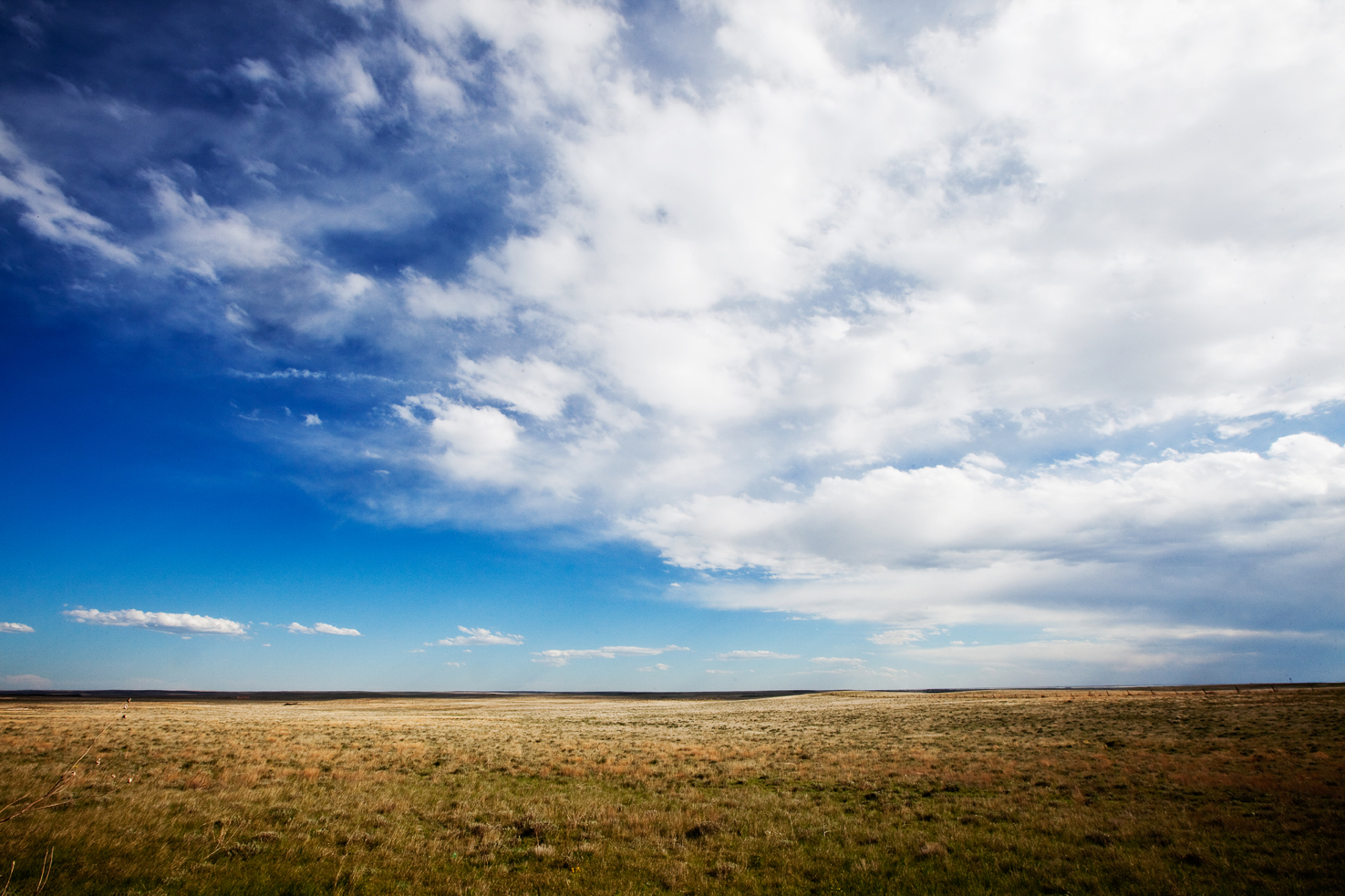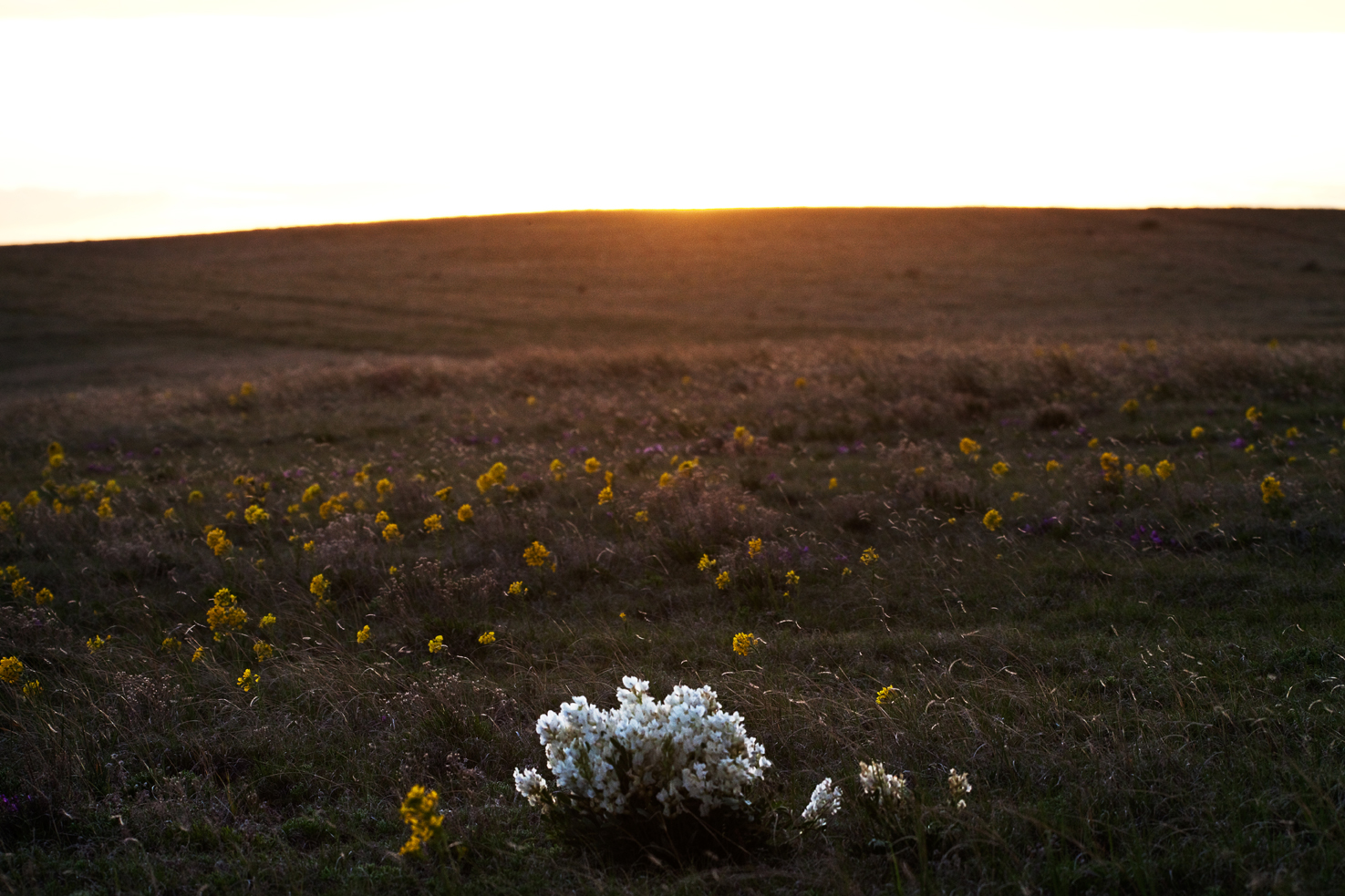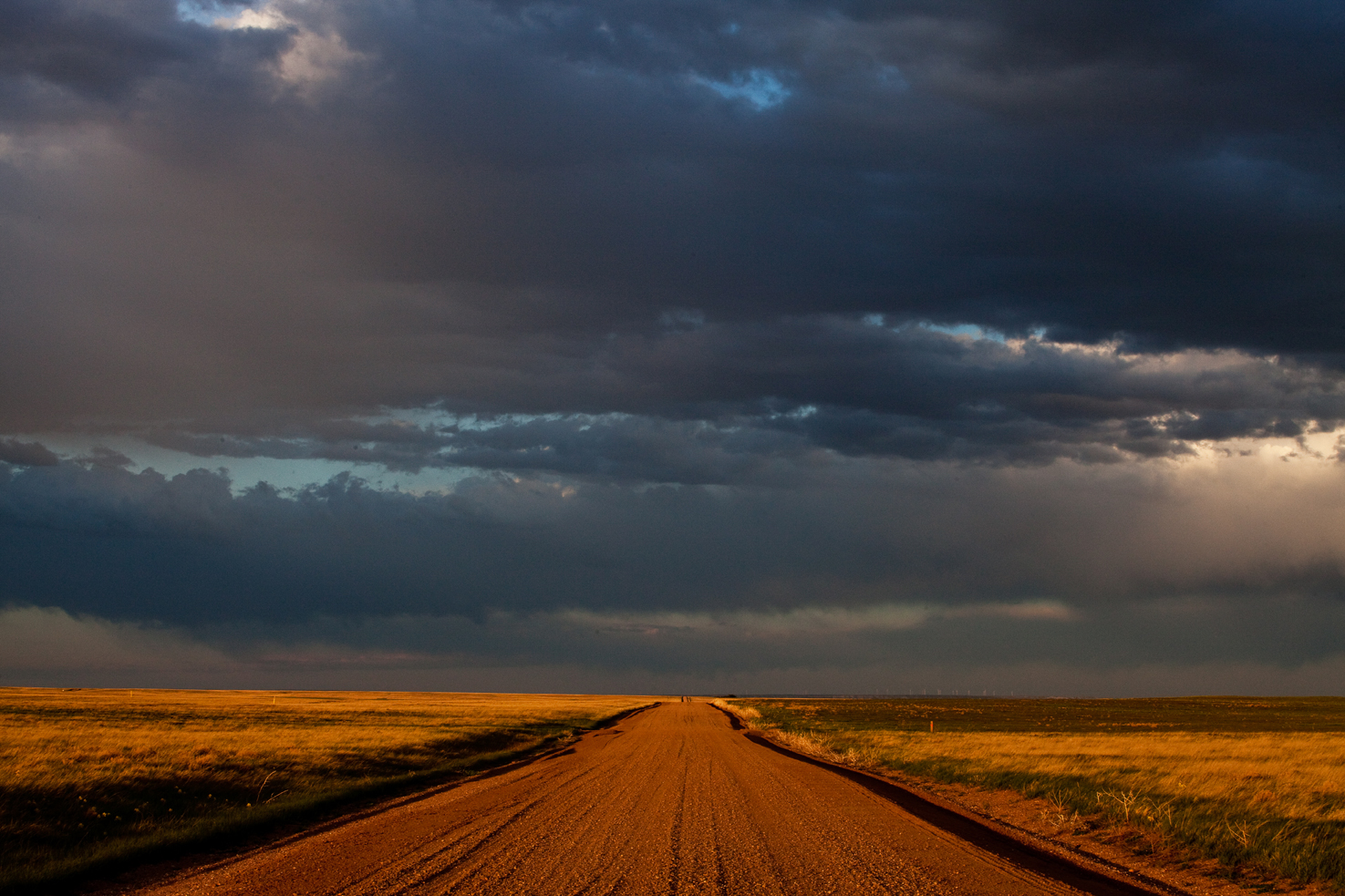(go directly to photo gallery)
Heading north on I-25, then east, few traces of either urban Denver or the Rocky Mountains remain. You're suddenly on the often overlooked and flown over prairie side of Colorado. Small towns centered around farming and cattle spring up and you pass signs that read "no gas for 60 miles." Two hours north-east of Denver, near the borders of Wyoming and Nebraska, two parcels of land called the Pawnee National Grassland are tucked into this slightly out of the way section of the state. Before moving here, I had never heard of the Pawnee; I first learned of its existence when I noticed two green squares on the map.
Wildflowers and rain clouds over the Pawnee Grasslands
Some simple research taught me that these are some of the few areas of native shortgrass prairie left in North America. I was immediately intrigued and wanted to explore - we simply don't have land like this where I come from. They were set aside by the federal government after the dust bowl in the 1930's. Over the years, they became a refuge for wildlife and internationally known in the birding world. Within the past 10 years, however, development by the energy industry has increased to the point that some parts of the western section of the national Grassland seem more managed than the surrounding farms. Traces of drilling or fracking are impossible to ignore, as are the giant windmills that are the new backdrop for the Pawnee Buttes. Gas trucks roll by, each trailed by a pillow of dirt.
Pronghorn, seen within 1/2 mile of entering the park on CO-14 near Keota.
Mailbox, tumbleweeds. Pawnee National Grassland.
Cattle, windfarms, on the road to Grover from the Pawnee Buttes.
Wind farms are impossible to miss near the Pawnee Buttes.
Despite all of the human activity, it is still stunningly beautiful. This is where the buffalo roam(ed) and the deer and the antelope (still) play. You can still see vast, undulating vistas to the horizon without roads or industry. Quick and driving rains pass through, leaving behind colder air and rainbows. Pronghorn, prairie dogs and abundant bird life still live here, especially in the few parts of the western tract that I saw on my first visit. You can still get glimpses at this extraordinary, dramatic and beautiful landscape while we still have it.







To see more of my photos of the Pawnee National Grassland, click here.
Practicalities: If you go, be prepared to bring anything you'll need for the day. Hiking boots, a walking stick (rattlesnakes are common), sunscreen, water, food, and a full tank of gas are essential before you go. The only facilities I saw were standard park issue latrines in the parking area by the buttes. No stores, no gas stations, nothing of note once you're past Greeley. Once your in the grasslands, most roads are dirt and are a mess when it rains - it takes longer to get around than you would think. Cellphone coverage was surprisingly strong and Google maps worked for most of the day, even if some recommended routes weren't possible as I don't have 4 wheel drive. Bring warm clothes even on warm days - the temperature can drop very quickly.
If you want to read more about recent changes at the Pawnee, Westword wrote a very interesting piece on it last year.